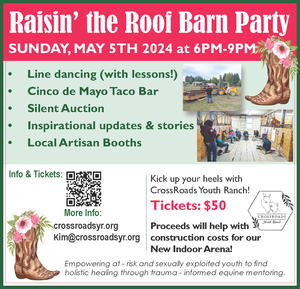Plant Lady
January 1, 1970
Christmas is just around the corner. We put up lights and trimmed the tree. Now it’s time to think about gifts.
This year I think I’ll give plants. I’m going to forgo those ugly sweaters and ties and give my friends something that will last for years and bring beauty and enjoyment every time it blooms.
The fabulous Hibiscus is the perfect gift. It is a tropical treasure guaranteed to brighten up anyone’s day.
Hibiscus is a genus of flowering plants native to warm temperate, subtropical and tropical regions throughout the world. The family, Malvaceae, the Mallow Family, is quite large, containing several hundred species.
The genus includes both annual and perennial herbaceous plants, as well as some woody plants and small trees. In temperate zones, the most commonly grown ornamental species is Hibiscus syriacus, the common garden Hibiscus, also known as the “Rose of Althea” or “Rose of Sharon.”
In tropical and subtropical areas, the Chinese Hibiscus, Hibiscus rosa-sinensis, is the most popular hibiscus because of its many showy hybrids.
This is a stunning plant with alternate, ovate to lanceolate leaves, often with toothed or lobed margins. The flowers are large, very conspicuous, trumpet shaped, with five or more petals. Hibiscus comes in many colors including white, pink, red, orange, purple and yellow. Flower color in certain species changes with age.
Hibiscus flowers might be the most dramatic flowers in the garden. Although the huge funnel-shaped flowers seldom last more than a day, they are abundant, and the plant blooms over several weeks. The fruit that forms after flowering is a dry five-lobed capsule, containing several seeds in each lobe. As the capsule matures, it opens, spilling the seeds out. The capsules are red or white.
In tropical areas, Hibiscus is often used as a landscape shrub. They are also grown in many gardens to attract butterflies, bees, and hummingbirds.
In our more temperate climate, the tropical species of hibiscus are very popular house plants. They bloom prolifically indoors, and their showy flowers bring a bright, welcome reminder of warmer climates.
A wonderful tea is made from hibiscus flowers. It is known in many countries around the world by many names and is served both hot and cold. The beverage is well known for its color, tanginess and flavor. It is also often mixed with other herbal teas to create delicious combinations.
The tea is popular as a natural diuretic and contains vitamin C and many other minerals. People with kidney problems often take it for its beneficial properties. Dieters like it because it can be consumed and enjoyed without adding sugar.
A study conducted by the USDA shows that consuming hibiscus tea lowers blood pressure in hypertensive adults. Three cups a day resulted in a significant drop in systolic blood pressure.
Hibiscus has a number of medical uses in Chinese herbology. Research indicates some potential in cosmetic skin care. An extract made from the flowers, for example, has been shown to function as an anti-solar agent by absorbing ultraviolet radiation.
In traditional Indian medicine, hibiscus, especially white and red hibiscus, is considered to have medicinal properties. The roots are used to make various concoctions believed to cure numerous ailments. These include cough, hair loss and the greying of hair. As a hair treatment, the flowers are boiled in oil along with other spices to make medicated hair oil. The leaves and flowers are also ground into a fine paste with a little water to make a paste that is used as a shampoo plus conditioner.
Dried Hibiscus flowers are edible and considered a delicacy in Mexico. The flowers can also be candied and used as a garnish. Certain species are also beginning to be used more widely as a natural source of food coloring. Red Hibiscus flowers, for example, are now used as a replacement for Red Number 3.
The state flower of Hawaii is Hibiscus brackenridgei. It is a sprawling shrub or small tree with beautiful yellow flowers with a maroon spot in the center. It is native to dry forests and shrub lands and is found on all the main Hawaiian Islands except Ni’ihau and Kaho’olawe. It is listed as an endangered species.
Hibiscus syriacus is the national flower of South Korea. Hibiscus rosa-sinensis is the national flower of Malaysia. The Hibiscus is also the national flower of the Republic of Haiti.
The red Hibiscus is the flower of the Hindu goddess Kali. It appears frequently in depictions of the goddess in the art of Bengal India. Often the goddess and the flower are shown to merge in form. The Hibiscus is also used as an offering to the goddess Kali and Lord Ganesha in Hindu worship.
In the Philippines, Hibiscus is used by children as part of a
bubble making pastime. The flowers and leaves are crushed until the sticky juices come out. Hollow papayas stalks are then dipped into the juice and used as straws for blowing bubbles.
In Tahiti the Hibiscus flower is traditionally worn behind the ear to indicate the wearer’s availability for marriage.
The bark of the Hibiscus contains strong fibers that can be obtained by letting the stripped bark set in the sea to let the organic material rot away. The Polynesians use these fibers to make grass skirts. They are also used to make wigs.
My neighbor has a Hibiscus in her house. It is beautiful! She is always cutting starts from the plant and rooting them in water to give to all her friends. I think I will do the same.
Merry Christmas everyone…










Reader Comments(0)